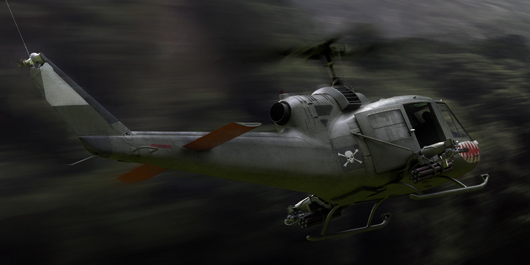The modeling, rendering and animation tools inside modo just got even better-and furrier

Modeling
Advanced subdivision surfaces and polygonal modeling have consistently been modo’s strength. However, this release takes modeling to a higher level with improvements to the Pen tool and the addition of new tools. For example, the Pen tool features an improved Quad mode, new Merge mode and options like Wall and Wall thickness-the latter two options are especially nice for faster architectural modeling. New tools include Drag Weld, Smooth and Grow Quads. When used in conjunction with better Background Constraints the new tools make it easy to tackle the tedious job of re-topologizing existing meshes.
To make modeling faster, modo 401 ships with hundreds of 1D and 2D profile presets that can be used as starting points for creating complex models. The new presets aren’t limited to just profiles, either: modo 401 features a new global preset architecture that focuses on efficient asset reuse. Another nice feature is no-nonsense UV mapping with improved Relax, UV Pack, and transform tools. 3D sculpting and painting haven’t changed much in this release. The modest improvements in these areas are in the form of performance enhancements; for example, the paint tools are now multi-threaded.
Fur
Now for the fun part: the debut of Fur, which not only simulates hair and fur, as one would expect, but also lets various types of fibers sprout from any surface. Now, all kinds of organic shapes and movement are possible, from hairy creatures to fields of grass or tinsel on a Christmas tree. You can use Fur to create everything from hairy or furry creatures to carpeting, felt, moss, grass or cables-just about anything fibrous is possible. Because Fur is material-driven, it’s fairly easy to create and can be controlled via parametric values like length and density, or with UV and weight maps. You can use several hair guides to “comb” hairs or fur, but be warned: It takes some practice to get the hang of these guides. But as you can see, the results are pretty impressive. This example was created by Jacques Defontaine.

Rendering
Rendering improvements in modo 401 appear in the form of several advanced tools, including Volumetric Lighting to simulate light interaction with atmospheric particles; blurry refractions to simulate complex transparent surfaces; a Shadow Catcher for improved composting; and Stereoscopic rendering to create the illusion of depth in stills and animation. One of my favorites, and sure to be a big hit, is the new Clearcoat Channel that simulates the kind of metallic, transparent finishes you see in automotive paints (see lead image at the top of the article, above). Two other new tools worth noting are Tone Mapping, for managing overexposure, and Deep Shadow Maps, for speeding up rendering in heavy scenes. Improvements to existing tools include a faster Preview Renderer, hybrid Global Illumination, better motion blur, and new camera and procedural texture options. Modo’s render engine is engineered to scale linearly, which means it takes advantage of all processors on your desktop system to render faster. All these improvements add up to a rendering system that is not only versatile, fast, and stable but is also just plain fun to use.
Animation
Luxology’s animation tools have been developing gradually since their introduction in modo 301. This release adds important new features like Channel Linking, Channel Modifiers and Constraints. Channel Linking lets the properties of one object drive the properties of another through specific relationships. In turn, these relationships can be controlled via Channel Modifiers or Constraints. There’s also simple 2D Planar Inverse Kinematics to animate jointed objects and Dynamic Parenting, which lets you edit parent-child hierarchies without collapsing them. Together, these and other new animation tools make it possible to orchestrate layers of complex animation. To watch the video of the animation still, below, see Luxology’s site here.

But because there are no true character animation tools or dynamics like particles or cloth, animation in modo is restricted to mechanical motions, as in the scene by Wiek Luijken, above. I’m guessing more advanced animation tools are coming in future versions of modo. The rendering and modeling tools in modo 401, however, are divine.









